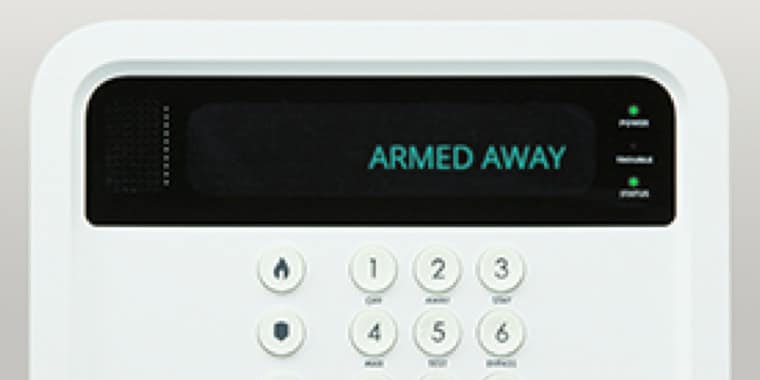September is National Baby Safety Month. And in keeping with this theme as well as our commitment to helping you better protect you and your loved ones, ADT would like to offer these very useful child safety tips—one for each day in September.
Click the image to see an informative Baby Safety Tips Infographic.
- Have your baby tips on safety in hand and do a safety check around the house, picking out any safety issues you want to fix. Afterwards, commit yourself to addressing and fixing all the items that you spotted.
- Baby’s Car Seat Safety
- Be sure the seat is properly installed (refer to installation instructions and vehicle owner’s manual)?
- If possible, place the seat in the center of back seat. Never use the front passenger side when there is an airbag.
- Infants less than one year and 20 pounds must be placed in the rear-facing position.
- A child must still be in a car seat until they are four years old and weigh at least 40 pounds.
- Pool and Hot Tub Safety
- Consider having a locking 5 foot fence or a safety cover for your pool and/or hot tub.
- Get alarms on all doors leading from the house to the pool area.
- Remove all toys and debris from the pool and the pool area?
- Gun Safety
- Have you talked to your children about guns?
- Tell them they are never to touch or play with guns, even if someone wants to only show them a gun, they are to leave and tell another adult immediately.
- For gun owners:
- Put all ammunition in a separate, locked place.
- Never keep live rounds in your gun.
- Keep the unloaded gun in a locked gun safe and the keys stored in a separate location.
- Write up a fire escape plan for your home and share the plan with everyone in the family so they know what to do.
- Check all fire safety equipment.
- Are the smoke alarms working?
- Make sure the fire extinguishers are full and everyone in the family knows how to use them.
- Make sure flashlights are strategically placed in with extra batteries and that everyone in the family knows where they are.
- Teach your kids the stop, drop and roll technique just in case their clothes catch on fire.
- Check the baby’s crib.
- Are the slats less than 2-3/8 inches?
- Are all the slats secure?
- The corner posts should not be any higher than the end panels and they should never extend over the end panels.
- Are there holes in the mattress?
- Remove all stuffed animals.
- The crib should not be near any windows, electrical outlets, lamps, etc.
- If you baby can pull themselves up, you should remove all mobiles.
- Check condition and sturdiness of toys. Throw away any toys with sharp edges or ones that are broken or falling apart.
- Check your children’s clothing for loose buttons and remove strings.
- Be sure the baby’s pacifier is always in good condition. Never use strings to attach the pacifier to baby’s clothes or crib.
- Is your family’s sleepwear fire retardant? Check labels to be sure.
- If you have them, check your safety gates and play yards and make sure they are in good condition. Stay away from or replace older accordion style safety gates. They are a strangulation hazard.
- When your baby is in the baby carrier, be sure to never place it on counter tops or any high surfaces. Babies have been known to wiggle and tip themselves over.
- Never use old or used baby walkers. They can be dangerous (especially old ones that don’t meet today’s safety standards). Never use them around or near stairs.
- Do a stroller check.
- For collapsible strollers, be sure the latches are secure before putting the baby in it.
- Always check that your child’s arms are out of the way when reversing handle directions.
- Be sure to use the safety strap.
- Never hang heavy bags on the stroller handle. This can cause the stroller to tip over.
- Review your cooking habits.
- Turn pot handles towards the back of the stove.
- To lessen the chance of accidents, it is best to use the back burners when cooking. This keeps the hot food further away from the reach of children.
- Make sure you talk to your children about stove and oven safety.
- Remove all unused freezer or refrigerators stored in your garage or yard. If you must keep it, be sure to lock the doors or store them with the door facing towards a wall that will not allow the door to open. Curious children can climb inside and suffocate.
- Check the latches on your cupboards. Replace any latches that have broken.
- Here are the 12 most common choking foods for kids under five:
- Popcorn
- Hot dogs
- Chunks of meat
- Raisins
- Ice cubes
- Chunky peanut butter
- Peanuts (nuts of any kind)
- Hard candy
- Grapes
- Raw carrots
- Potato chips
- Corn chips
- Never leave your toddler or baby alone while eating. If they begin to choke you need to be nearby to assist.
- Look for and remove all loose change around the house. Babies and toddlers love putting things in their mouths and loose change on the floor or in the cushions of the couch are choking potential hazards.
- Get rid of any old or expired prescriptions and medications. Be sure your medicine is safely and securely stored away. Just a word of warning: do not call medication “candy” in front of your children. Kids are not able to discern the difference.
- NEVER leave your baby unattended in the bathtub under any circumstance. Wait until the baby can sit up by themselves to give baths in the tub.
- Clean your yard. Make sure there is no equipment lying around such as trimmers, lawnmowers, hoses, etc. that could cause injury to your children.
- Check the cords on your blinds and draperies. Be sure they are tied up or cut off and kept out of your child’s reach. The loop of the cord should break apart if you slide your hand between the two cords.
- Secure your bookshelves firmly to the walls. An unsecure bookshelf can topple over on a child, especially if the child grabs or climbs on it.
- Make sure you know CPR and basic first aid techniques. If you do not, enroll in an infant/child CPR and first aid class.
- See your house from the point of view of your baby. Get down on your hands and knees and crawl through your house and look for any potential hazards.






